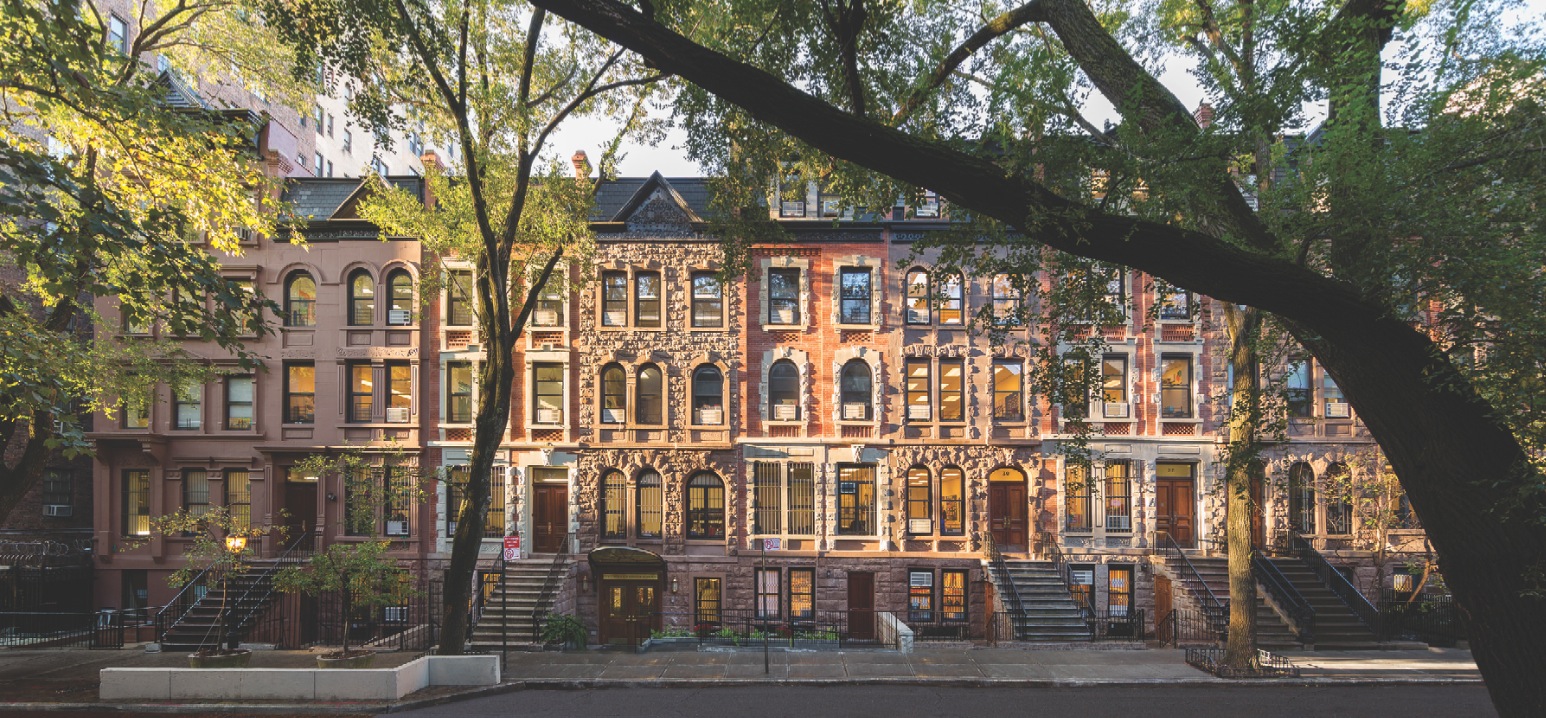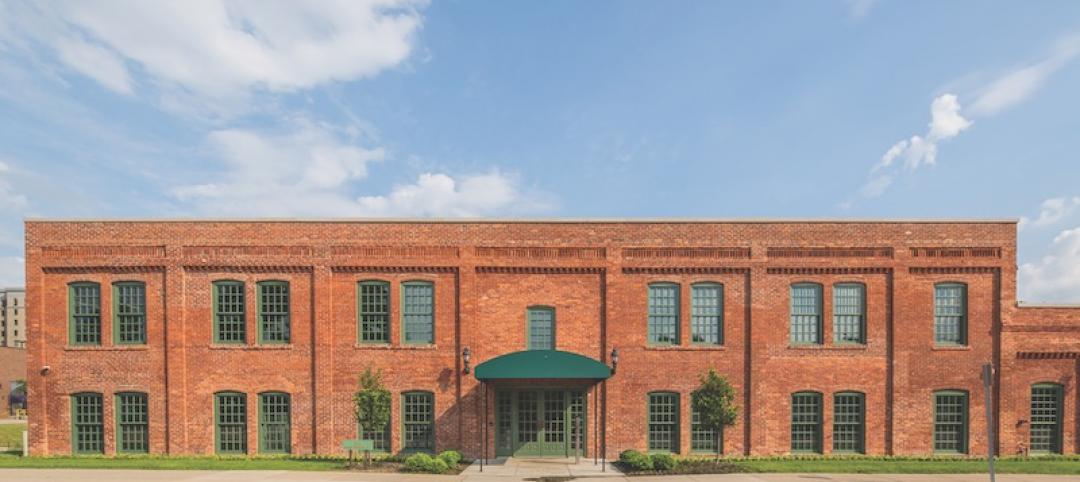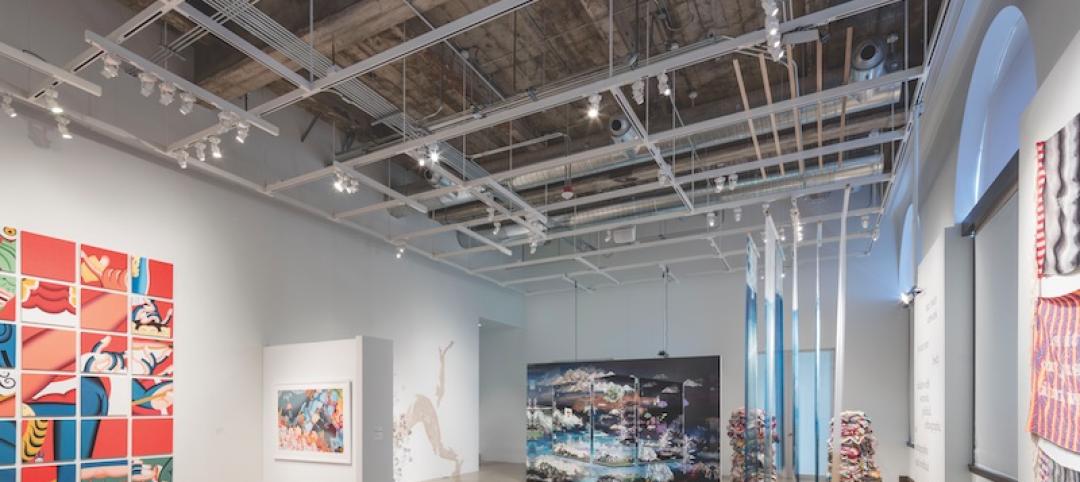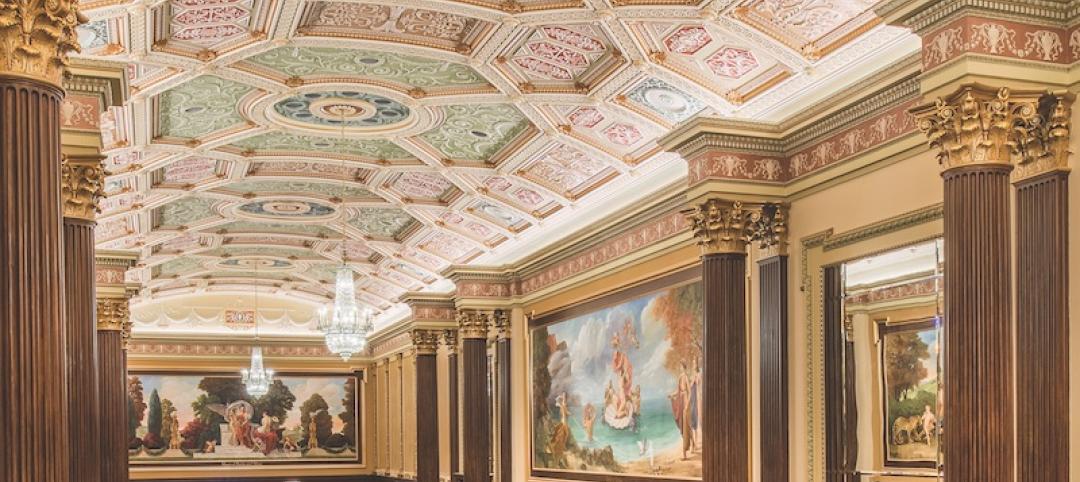Columbia Grammar School was founded in 1764 as a boys’ preparatory school under the administration of Kings College (now Columbia University). The school separated from Columbia in 1941 and merged with Leonard School for Girls 15 years later. In 1978, the name was changed to Columbia Grammar and Preparatory School. Today, the school serves 1,300 students (pre-K to 12) at its facilities in a historic district on the Upper West Side of Manhattan, near Central Park.
The part of the campus that houses the Lower School (pre-K to grade 4) is made up of seven brownstone townhouses with landmarked façades that stretch along West 94th Street. Several years ago, IBI Group n Gruzen Samton was brought in to consolidate, upgrade, and enlarge this string of buildings and make the connections between them more rational.
GOLD AWARD
COLUMBIA GRAMMAR AND
PREPARATORY SCHOOL | NEW YORK, N.Y.Building Team
Submitting firm: IBI Group n Gruzen Samton (architect)
Structural engineer: Robert Silman Associates
MEP/FP: Rodkin Cardinale Consulting Engineers
Façade consultant: CTS Group Architecture/Planning PA
GC: MC Construction ConsultingGeneral Information
Size: 42,500 sf
Construction cost: $7.5 million
Construction time: 2008 to 2014
Delivery method: Design-build
The task before the Building Team on the design-build project was not easy. The site was tight, with limited space for development outside the existing building footprint. New construction would have to take place largely within the historic structures. Floor elevations varied between the seven brownstones, making internal circulation a nightmare. Already tight existing spaces would have to be reallocated to meet expanded program demands, such as enhanced recreation facilities and new science classrooms.
There were also civic considerations: zoning appeals would have to pass through the city’s Landmarks Preservation Commission and the Board of Standards and Appeals. There were concerns about potential code violations in the brownstones. Neighbors in this extremely upscale area of the city would be watching carefully for any changes that might block their views or negatively (in their eyes) change the character of the buildings or streetscape.
The Building Team faced these concerns head on.
To make the egress and circulation system more accessible and code compliant, the Building Team replaced the existing fire escapes with a system of exterior walkways at the back of the buildings. These loggia-like paths slope along the façades following the natural elevation differences between the building elevations.
A new elevator tower clad in glass fiber–reinforced concrete panels in a compatible red-brick color provides ADA-compliant access to all floors and the roof playground. The Lower School was provided with an enhanced connection—fewer steps and a widened corridor—to the West 93rd Street side of the campus.
In the rear yard, a new 2,000-sf gymnasium was sunk four feet below grade to reduce its visual and spatial impact. A fully glazed wall, which allows ample sunlight into the gym, peeks out from beneath a double-terraced parapet with extensive floral landscaping. Students can use a play surface outside the gym or another on the garden roof.
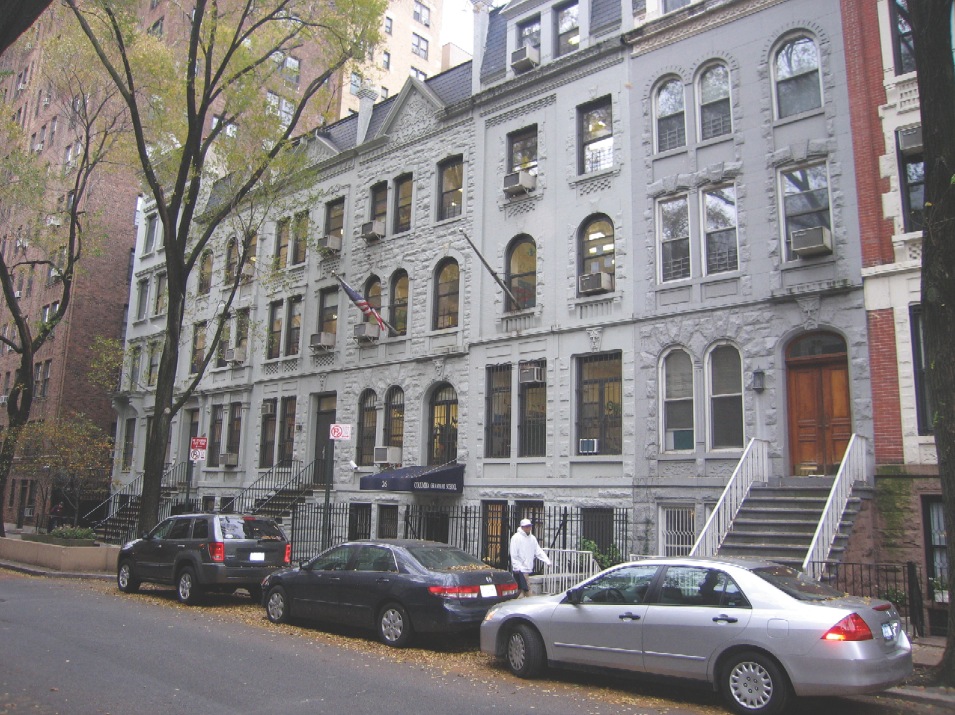 The battleship-gray paint of the school’s exterior was stripped to reveal a festival of brownstone façade treatments along West 94th Street.
The battleship-gray paint of the school’s exterior was stripped to reveal a festival of brownstone façade treatments along West 94th Street.
The roof of the three brownstones at 22, 24, and 26 West 94th Street was lower than the other roof sections. Here, the Building Team put in a single-story penthouse addition for two new science classrooms and a secluded rooftop science-learning garden. The science rooms look south above the exterior walkways and play spaces below. They were purposely hidden from view from the street to satisfy neighborhood concerns.
The Building Team took aesthetic considerations to heart. Somewhere along the way, the façades on 94th Street had been painted a dusky shade of battleship gray unlike anything else in use on the block. The gray paint was carefully stripped from the façades. Underlying stone, stucco, and brick and mortar colors were surveyed and catalogued to create matching repair materials that would be indistinguishable from the original materials.
Structural elements on the exterior stair and open corridor system were painted with what the designers call a “gentle green” to provide relief from all the monochrome red that covered so much of the structures.
Significant architectural details, such as moldings, quoins, and textures, were meticulously preserved. Cornices were surveyed for damage and restored using deteriorated scrap material that was molded and formed to produce replica components.
 The old entrance (left) was too small. It was moved to the adjacent double-size bay (right) and widened.
The old entrance (left) was too small. It was moved to the adjacent double-size bay (right) and widened.
Regulatory approvals were yet another can of worms. IBI Group n Gruzen Samton led the way for the project to secure OKs from the Landmarks Preservation Commission and the Board of Standards and Appeals. The approved design called for the addition of two floors at the lower and upper roofs of the building and the addition of one floor to the West 93rd Street setback. The additions complied with all applicable codes, while avoiding the need for wholesale changes to the existing buildings.
The work at Columbia Grammar and Preparatory School continues. After a seven-year effort, IBI Group n Gruzen Samton recently helped the school win zoning and landmarks approval for an extensive renovation and two-story addition to the existing 1994 space, which will lead to the creation of a new middle school facility.
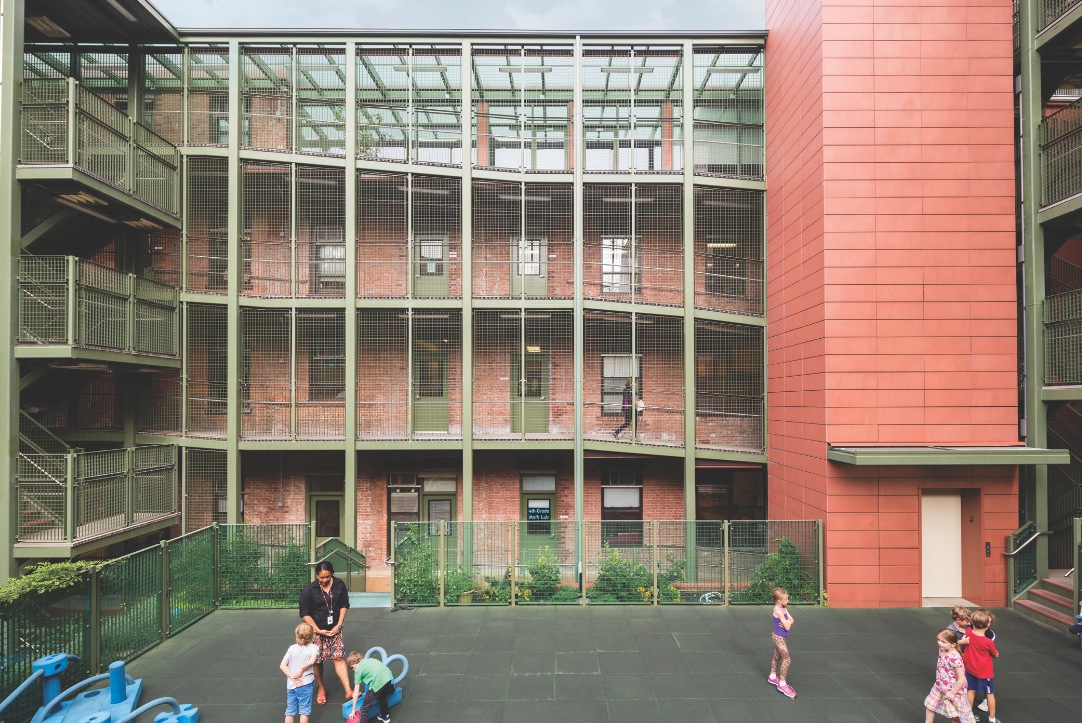 Exterior walkways and a playground (above) were added, as were new science classrooms (below).
Exterior walkways and a playground (above) were added, as were new science classrooms (below).
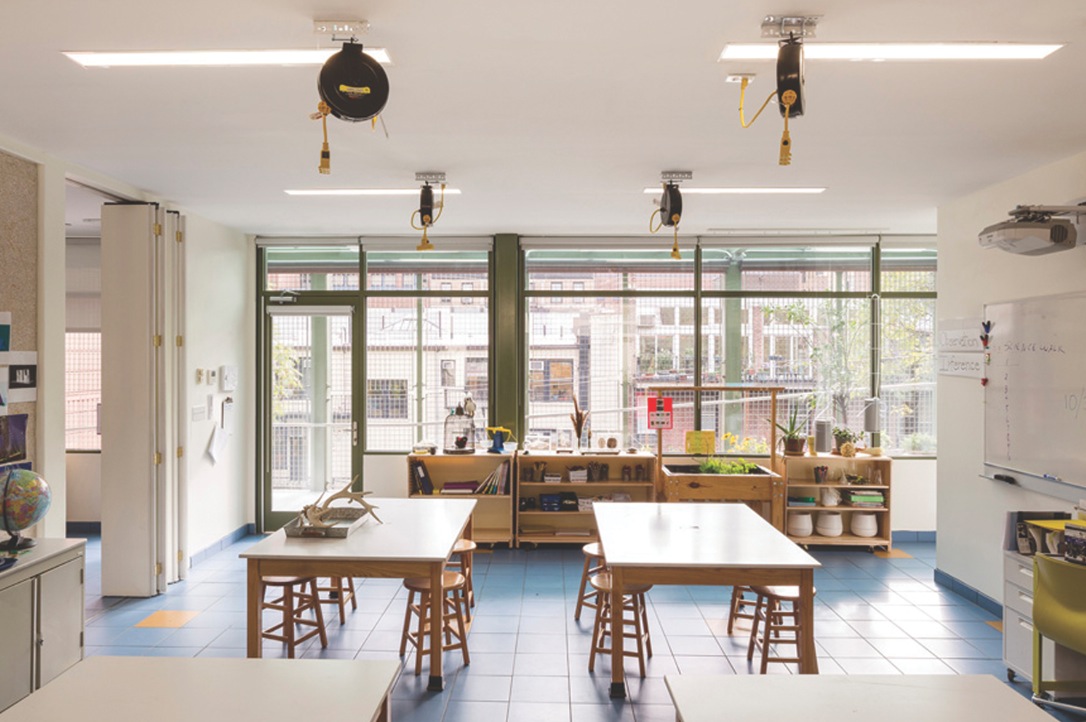
Related Stories
Reconstruction Awards | Nov 27, 2017
Patient friendly: The University of Chicago Medicine Center for Care and Discovery adds 203 new beds
Strict infection control and life safety measures were implemented to protect patients on other floors as work proceeded.
Reconstruction Awards | Nov 27, 2017
The birthplace of General Motors
The automotive giant salvages the place from which it sprang, 131 years ago.
Reconstruction Awards | Nov 21, 2017
Mama mia! What a pizzeria!: It started as a bank nearly a century ago, now it’s a pizza parlor with plenty of pizzazz
The first floor features a zinc bar and an authentic Neapolitan pizza oven.
Reconstruction Awards | Nov 21, 2017
Honor Guard: San Francisco’s historic Veterans Building pays homage to those who served in World War I and other foreign wars
The Veterans Building houses the War Memorial staff, the city’s Arts Commission, the Opera’s learning center and practice/performance node, the Green Room reception venue, and the 916-seat Herbst Theatre.
Reconstruction Awards | Nov 20, 2017
Eyes wide open: Students can see their new home’s building elements
The two-phase project revamped an opaque, horseshoe-shaped labyrinth of seven buildings from the ’60s and ’70s.
Reconstruction Awards | Nov 17, 2017
Gray lady no more: A facelift erases a landmark’s wrinkles, but not her heritage
The Building Team restored the granite and terra cotta façade and reclaimed more than 500 double-hung windows.
Reconstruction Awards | Nov 17, 2017
Elegance personified: New life for a neglected but still imposing retail/office space
The building was in such disrepair that much of the reconstruction budget had to go toward structural, mechanical, and electrical infrastructure improvements.
Reconstruction Awards | Nov 16, 2017
Back to the '20s: Coney Island gets a new eatery reminiscent of the past
This project included the restoration of the landmark Childs Restaurant.
Reconstruction Awards | Nov 15, 2017
Foyer fantastique: Faded images provide the key to a historic theater's lobby restoration
The restoration relied heavily on historic photos and drawings.
Reconstruction Awards | Nov 14, 2017
Hallowed ground: A Mormon temple rises from the ashes of a fire-ravaged historic tabernacle
Parts of the tabernacle’s exterior shell were the only things that survived the blaze.


